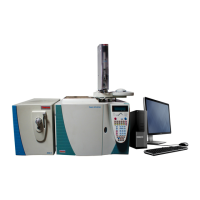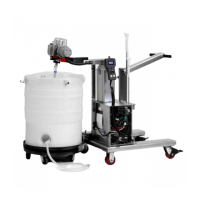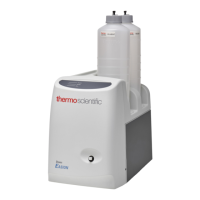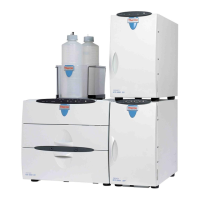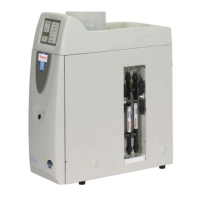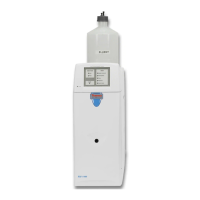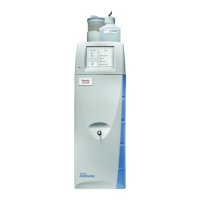Do you have a question about the Thermo Scientific DSQ Series and is the answer not in the manual?
Specifies electromagnetic compatibility standards for the instrument.
Details compliance with low voltage safety directives and standards.
Outlines FCC regulations for digital devices and potential interference.
Provides safety guidelines for physically moving the instrument.
Advises on using the instrument as specified to maintain protection.
Warns about potential interference from radio frequency transmitters.
Explains the meaning and use of safety alert words and symbols.
Specifies the electrical power requirements for the mass spectrometer and GC.
Explains the connection and function of the Direct Probe System.
Step-by-step guide for analyzing cholesterol using the Ion Trap Series.
Instructions for connecting the DPC and sample probe.
Procedure to change the ion volume for analysis.
Steps to deselect AS and GC instruments in software configuration.
Guidance on tuning and calibrating the mass spectrometer.
Instructions for programming the Direct Probe Controller settings.
Detailed steps for preparing samples for analysis.
Guide to creating an analysis method file in the software.
Steps for creating a sequence file for automated runs.
Procedure for inserting the probe using the Xcalibur software.
Procedure for removing the probe using the Xcalibur software.
Steps for processing and analyzing acquired data files.
Instructions for loading both liquid and solid samples into the DIP.
Glossary of terms related to DIP operation.
Explains ballistic and temperature-programmed modes for DIP.
Description of the DIP probe shaft component.
Description of the DIP probe tip component.
Information about the sample cups used with the DIP.
Essential safety precautions for operating the DIP.
Practical tips for optimizing DIP experiments and usage.
Explains the connection and function of the Direct Probe System for DEP.
Steps for analyzing cholesterol using DEP on Ion Trap Series.
Instructions for connecting the DPC and DEP probe.
Procedure to change the ion volume for DEP analysis.
Steps to deselect AS and GC instruments for DEP operation.
Guidance on tuning and calibration for DEP.
Instructions for programming the DPC for DEP.
Steps for preparing samples for DEP analysis.
Guide to creating an analysis method file for DEP.
Steps for creating a sequence file for DEP runs.
Procedure for inserting the DEP probe using Xcalibur.
Procedure for removing the DEP probe using Xcalibur.
Steps for processing and analyzing acquired DEP data.
Steps for analyzing cholesterol using DEP on DSQ Series.
Instructions for connecting the DPC and DEP probe to DSQ.
Procedure to change the ion volume for DEP analysis on DSQ.
Steps to deselect AS and GC instruments for DEP on DSQ.
Guidance on tuning and calibration for DEP on DSQ.
Instructions for programming the DPC for DEP on DSQ.
Steps for preparing samples for DEP analysis on DSQ.
Guide to creating an analysis method file for DEP on DSQ.
Steps for creating a sequence file for DEP runs on DSQ.
Procedure for inserting the DEP probe using Xcalibur on DSQ.
Procedure for removing the DEP probe using Xcalibur on DSQ.
Steps for processing and analyzing acquired DEP data on DSQ.
Explains the current-programmed mode for DEP operation.
Description of the DEP probe shaft component.
Description of the DEP probe tip component.
Provides contact information for technical support and service.
| Brand | Thermo Scientific |
|---|---|
| Model | DSQ Series |
| Category | Laboratory Equipment |
| Language | English |
